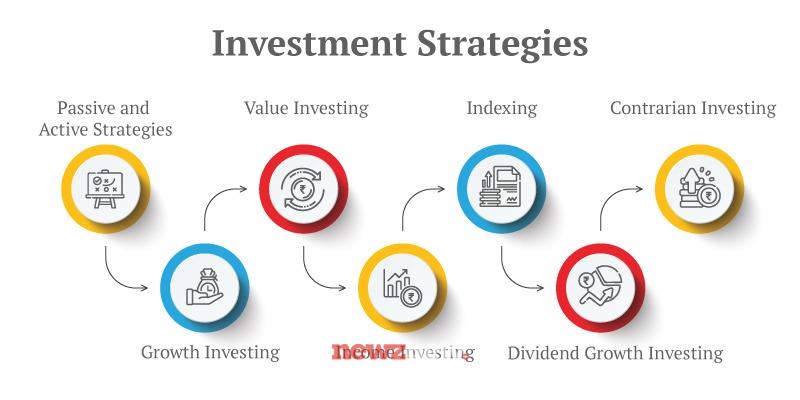Contents
- 1 Lessons from 2024: Building on Market Resilience
- 2 Core Investment Strategies for 2025
- 3 1. Stick to Systematic Investment Plans (SIPs)
- 4 2. Focus on Quality Stocks and Defensive Sectors
- 5 3. Diversify Across Asset Classes
- 6 4. Explore Thematic and Global Funds
- 7 6. Consider Tactical Lumpsum Investments
- 8 7. Monitor Macroeconomic Indicators
- 9 Emerging Trends Affecting Investment Decisions
- 10 AI and Transformational Innovation
- 11 Style Rotation Dynamics
- 12 Geopolitical and Policy Uncertainties
- 13 Practical Tips for Investors in 2025
Navigating the economic uncertainty in 2025 requires smart, adaptive investment strategies focused on resilience and long-term growth.

With geopolitical shifts, fluctuating interest rates, and emerging technologies reshaping markets, investors should prioritize diversification, disciplined buying, and quality assets to protect and grow their wealth.
Lessons from 2024: Building on Market Resilience
Despite global volatility in 2024, Indian markets delivered strong returns in key indices like Sensex and Nifty. This resilience highlighted the importance of consistent investing methods such as Systematic Investment Plans (SIPs) and strategic portfolio rebalancing during corrections. These principles remain critical for 2025 as markets balance growth opportunities with risks.
Core Investment Strategies for 2025
1. Stick to Systematic Investment Plans (SIPs)

SIPs help investors embrace market volatility through cost averaging. By investing a fixed amount regularly in mutual funds or ETFs, investors lower the average purchase price during market dips, setting the stage for potential upsides during recoveries. This disciplined approach removes the stress of timing the market perfectly.
2. Focus on Quality Stocks and Defensive Sectors

In times of uncertainty, companies with strong fundamentals, consistent earnings growth, and manageable debt levels offer stability. Defensive sectors such as FMCG, pharmaceuticals, and utilities typically weather downturns better and provide steady returns. Prioritizing industry leaders in these sectors can reduce risk exposure.
3. Diversify Across Asset Classes

Mitigating risk through diversification remains vital. A well-balanced portfolio in 2025 could include equities for growth, debt instruments like bonds for stability, gold as an inflation hedge, and Real Estate Investment Trusts (REITs) for passive income streams. Spreading investments reduces the impact of localized market shocks.
4. Explore Thematic and Global Funds

Thematic mutual funds and ETFs, focusing on sectors like renewable energy, infrastructure, and AI-driven technologies, offer exposure to high-growth areas. Additionally, investing in global markets—such as U.S. tech stocks or select Asian growth equities—adds geographic diversification, capturing opportunities beyond domestic borders.5. Rebalance Portfolios Regularly
Economic volatility can shift portfolio allocations unintentionally, increasing risk or reducing potential returns. Rebalancing ensures alignment with an investor’s risk tolerance and investment goals by selling over-weighted assets and buying under-weighted ones—especially important during market ups and downs.
6. Consider Tactical Lumpsum Investments

For investors with a higher risk appetite, market corrections offer opportunities to make lumpsum purchases in quality stocks or equity mutual funds at discounted prices. However, these should complement long-term plans and be approached with caution to avoid timing pitfalls.
7. Monitor Macroeconomic Indicators

Key economic metrics like inflation rates, interest rate changes, and government fiscal policies influence markets. Higher inflation can erode equity gains, while interest rate trends affect borrowing and spending. Staying informed enables timely adjustments to investment strategies for optimal performance.
Emerging Trends Affecting Investment Decisions
AI and Transformational Innovation
Technologies driving productivity and market disruption—especially AI, cloud computing, and semiconductor innovations—are projected to fuel significant corporate profit growth. Investors benefit by integrating exposure to these sectors for sustainable returns.
Style Rotation Dynamics
With markets experiencing shifts between value and growth investing styles, staying flexible and ready to rotate allocations among sectors and styles can enhance risk-adjusted returns. Mutual funds and ETFs with active management play a key role in capturing these shifts.
Geopolitical and Policy Uncertainties
Geopolitical tensions and uncertainty over policies such as trade agreements and fiscal stimulus create headwinds. A defensive posture balanced with selective growth exposure offers a prudent way to navigate these challenges.
Practical Tips for Investors in 2025
-
Maintain a long-term perspective, avoiding impulsive reactions to market noise.
-
Use SIPs for steady accumulation and lumpsum investments strategically.
-
Diversify by asset type, geography, and sector to reduce risk concentration.
-
Regularly reassess and rebalance portfolios to align with continuously evolving markets.
-
Leverage mutual funds and ETFs to gain professional management and diversification.
-
Stay updated on macroeconomic and market developments influencing asset prices.
In a 2025 environment defined by economic uncertainty and innovation-driven shifts, successful investing leans heavily on discipline, diversification, and adaptability. Combining proven strategies like SIPs and portfolio rebalancing with knowledge of emerging trends such as AI growth and global diversification empowers investors to build resilient portfolios prepared to capture opportunities and manage risks.






